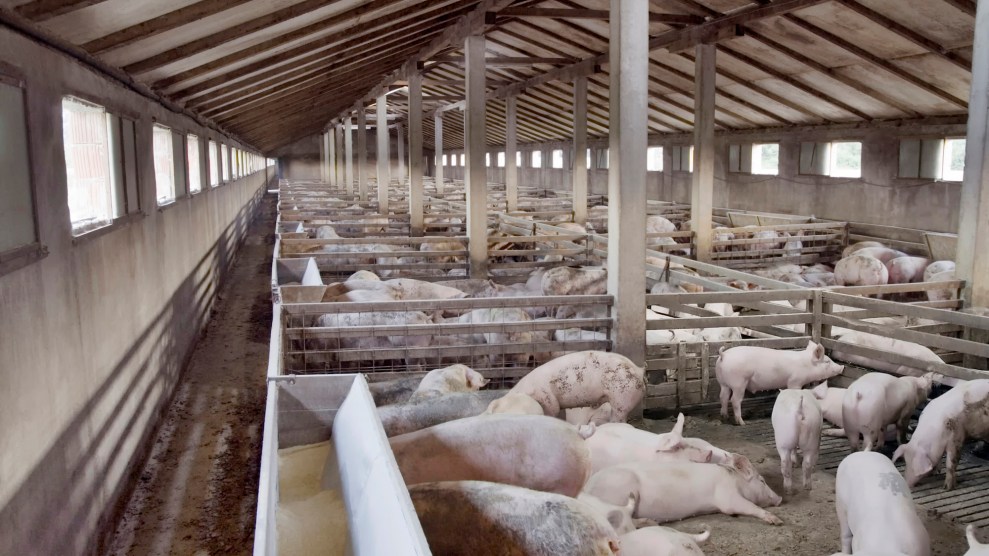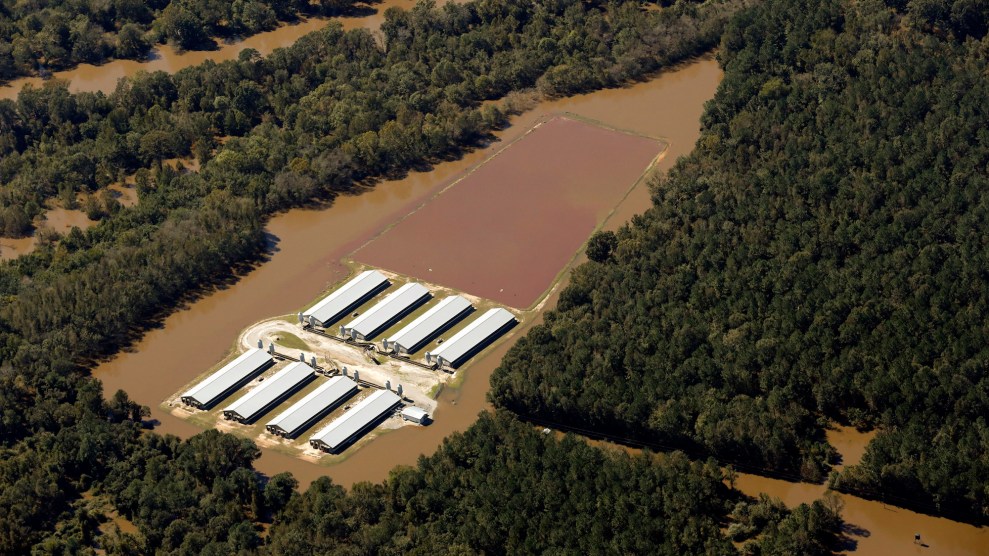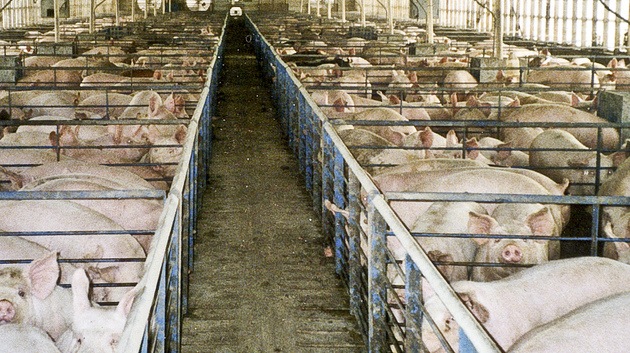
<a href="http://www.istockphoto.com/photo/hogs-inside-an-iowa-swine-finishing-barn-gm503663708-82671235?st=_p_hog%20farm">DarcyMaulsby</a>/iStock
For a fascinating new study, Duke researchers looked at flu patterns over four years across North Carolina, a state with high concentrations of intensive hog farming in some regions, and very little on others. The idea was to determine whether living near large-scale hog farms affects the way communities experience flu—a key question, because many flu strains mutate quickly and jump easily between people and hogs. The answer, in short, is yes.
To understand the findings, it’s important to note that each flu season brings different dominant strains that infect people. Some years, pig-adapted strains proliferate among people; other years, strains that aren’t adapted to those farm beasts do. Pig-adapted flu strains became more common after 2009, when H1N1 emerged and caused a global pandemic. It has been circulating ever since, and in some flu seasons (like 2015-’16) it is the predominant strain affecting people.
Over the study period, two of the flu seasons were dominated by pig strains—and in both, the flu season peaked earlier in hog-intensive counties, measured by the number of reported cases among people. In the other two non-pig flu years, flu seasons across North Carolina’s counties showed no such pattern.
Infectious-diseases writer Maryn McKenna has an excellent explainer on FERN’s Ag Insider:
What likely happened, they [the authors] say, is that the virus circulating in those flu seasons was carried onto farms by workers and spread to the pigs — and as it passed from pig to pig, the virus had a chance to reproduce in a manner that would not have happened in the absence of CAFOs. That much larger amount of virus spread back out into surrounding community, spiking the number of flu cases earlier in the flu season.
The upshot, the researchers say, is that vaccine strategies should expand. Currently, public health authorities target kids, elderly people, and people with compromised immune systems for flu-shot campaigns. People who work on and live near hog farms should also be encouraged to achieve “universal influenza vaccination,” they say.
Fair enough. But it also seems worth asking whether it’s a smart idea to concentrate hog farming so tightly. Every year, North Carolina’s confinement facilities churning out 10 million pigs—14.5 percent of total US production—the vast majority of which is crammed into a few eastern counties. These hyper-concentration of hogs creates what the authors call a “crucible for human influenza epidemics.”














